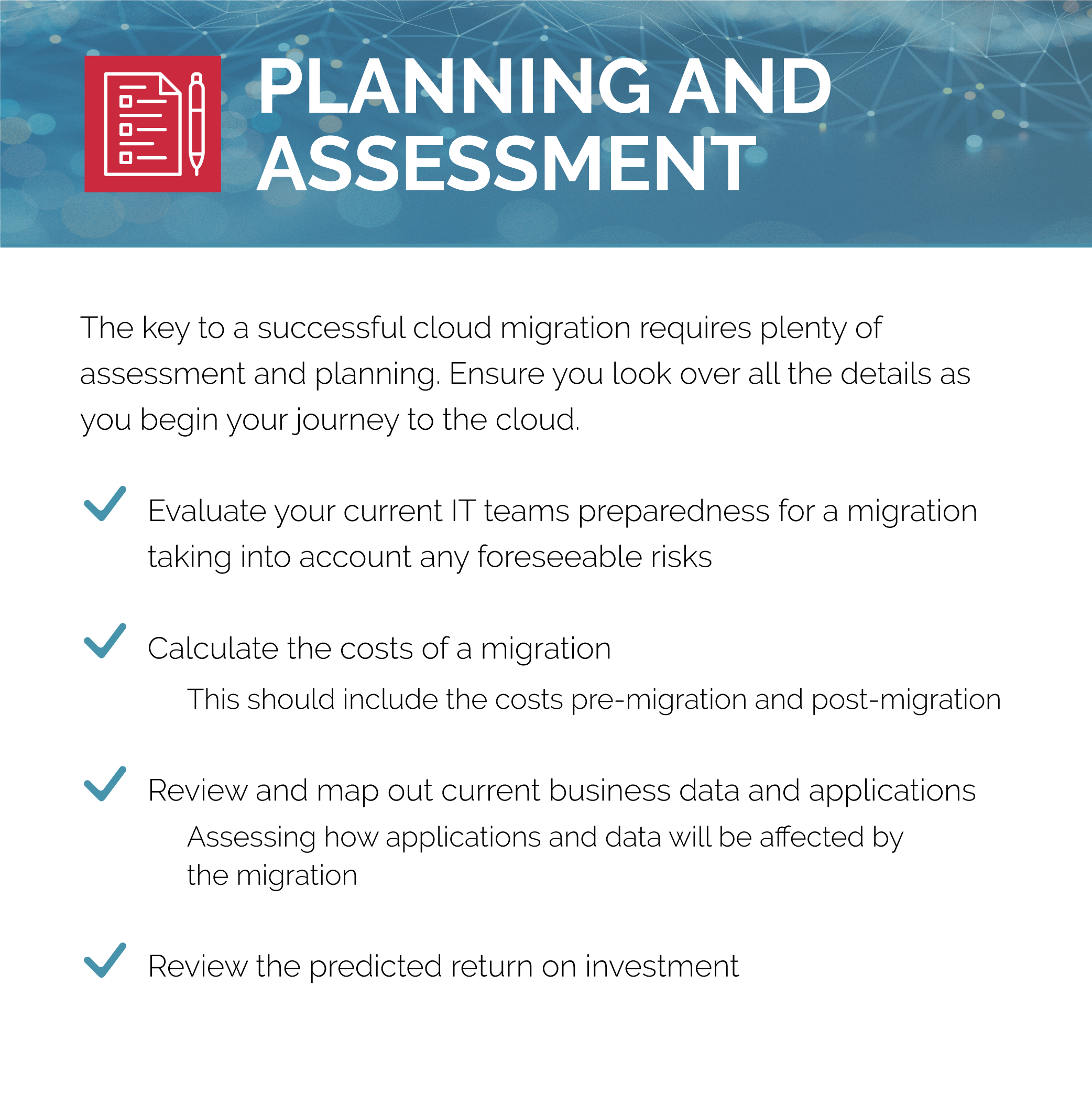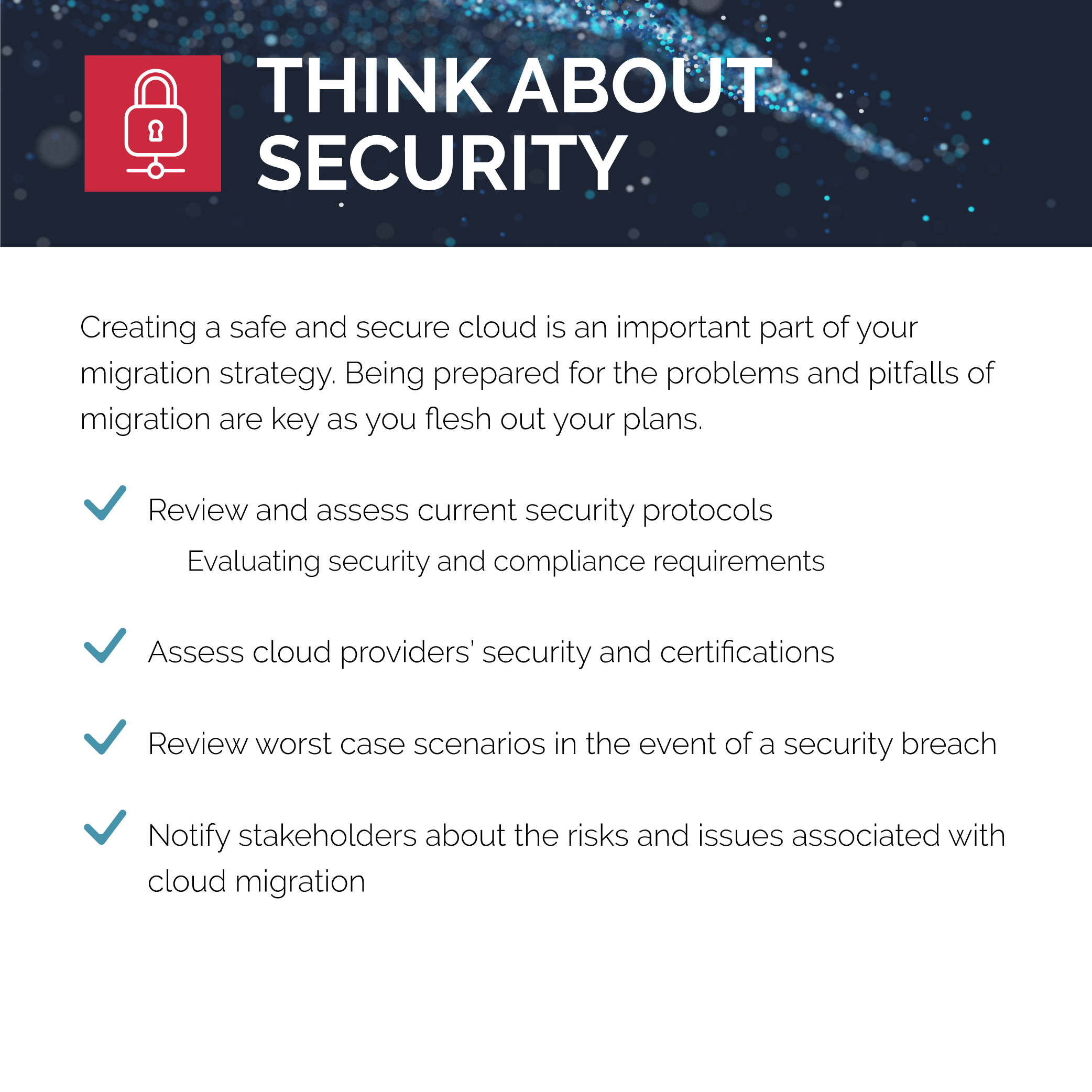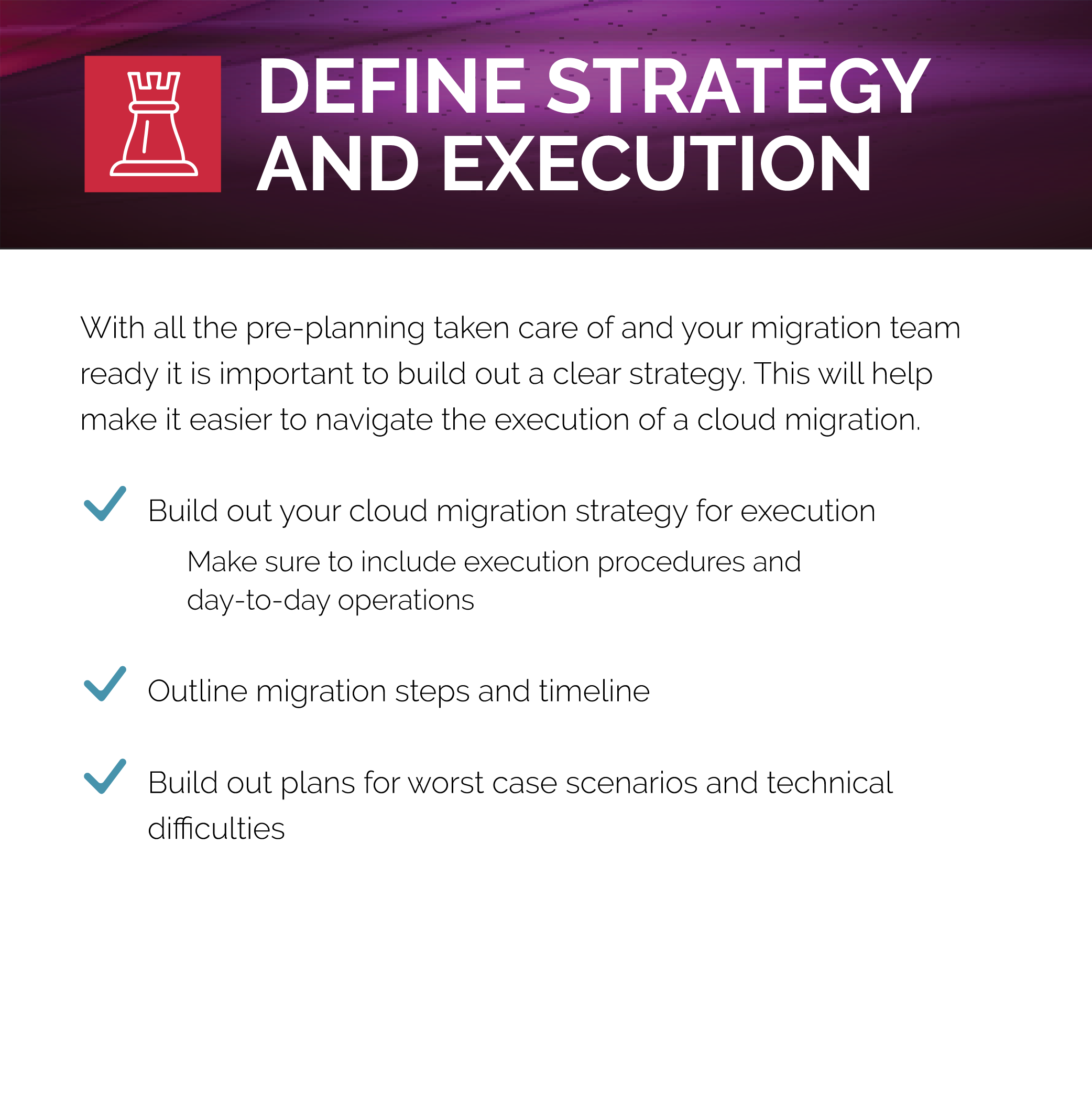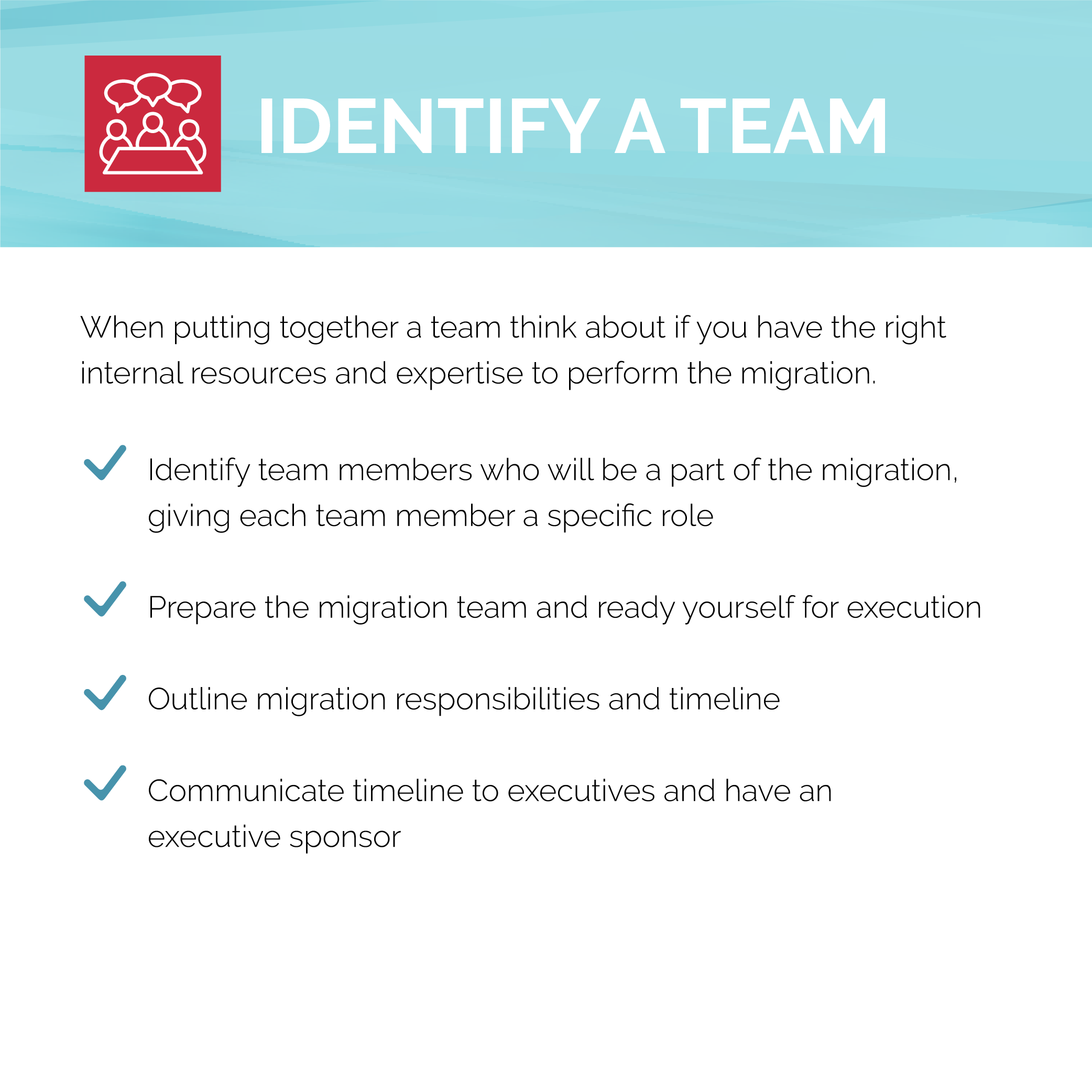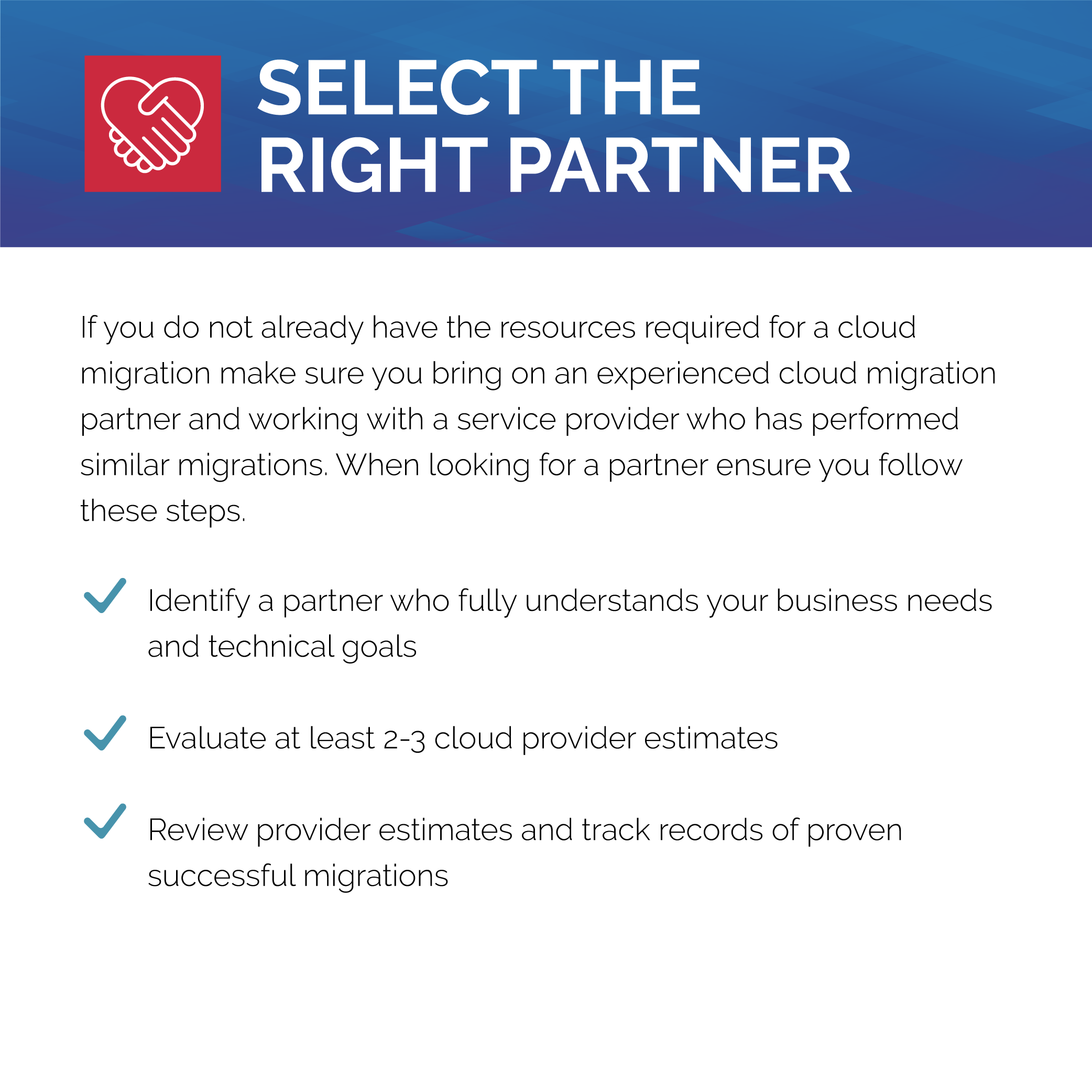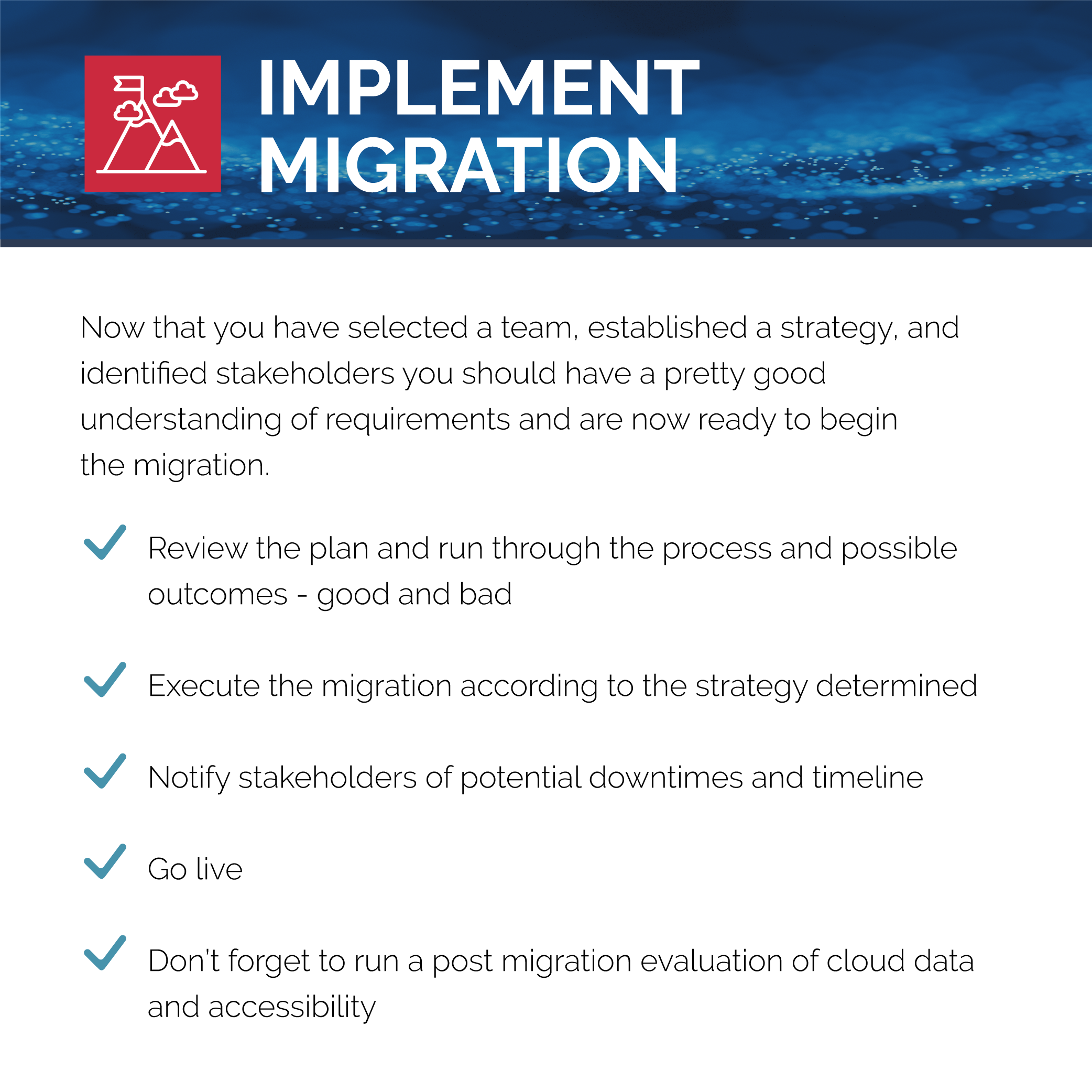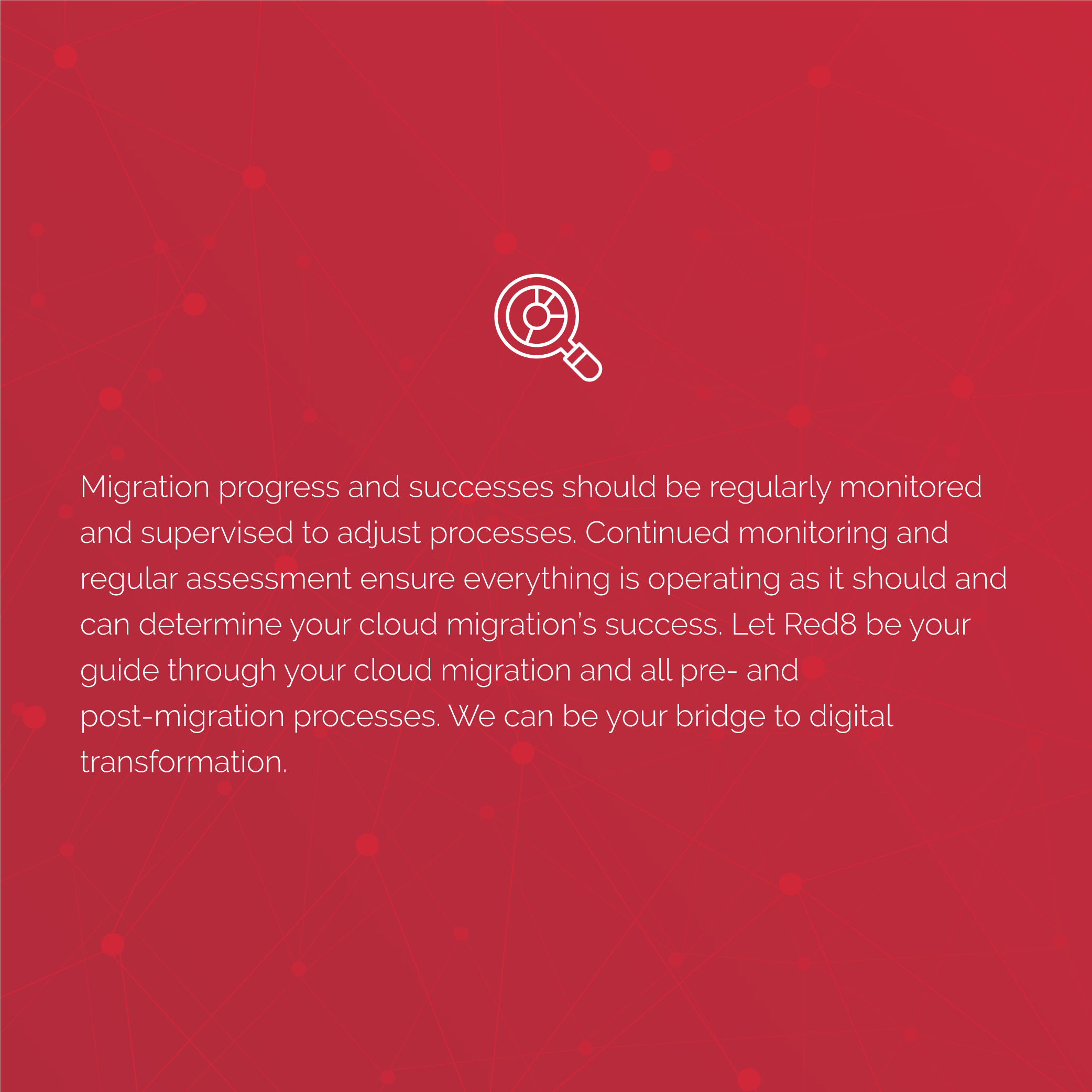Moving to the cloud makes a lot of sense for a growing business. The combination of on-demand, scalable infrastructure, low up-front, CAPEX costs, and strong security and resilience makes for a strong business case. The question is, what’s the best way to decide on and plan a migration? As cloud migration experts, we’re often asked about the best ways to move to a public, private, or hybrid cloud, — that’s why we’ve put together our “Cloud Migration Checklist” to help you make the right decisions.
What’s Included in the Cloud Migration Checklist?
We’ve broken the checklist into six sections. They are:
- Begin cloud migration planning and assessment.
- Understand security in your new cloud environment.
- Define your strategic approach.
- Identify your cloud migration team.
- Find an expert partner.
- Implement migration and make the move.
Let’s explore each of these in more detail.
Cloud Migration Planning and Assessment
Before you start your cloud journey, you’ll need to assess where you are right now and plan your next steps. Take plenty of time over this, as it’s vital to get the details right if you want a successful cloud migration. Look at the current skills in your IT team, the business, and your key stakeholders. Establish if you have the right expertise, experience, and insight to manage a migration.
Next, you’ll need to build a business case for making the move. Understand the costs of the migration and the costs of doing nothing. Take into account your likely future business growth, and how that will look in the cloud and on legacy infrastructure. Review and audit your existing infrastructure, applications, data, and business processes so you know what you’ll need to move. This will help you build a business case and establish your return on investment.
Security Requirements and Provisions in the Cloud Environment
With the right planning, security in your cloud environment will be as good or better than for your on-premise datacenter. You should start by reviewing your current security protocols and how each of them will be affected by a move to the cloud. Next, look at your chosen cloud vendor’s security provisions, processes, and certifications. Look into how you would deal with a security breach and at potential data backups or third-party tools to help you manage issues.
Build all of this into a risk and issues log so you can prioritize your concerns, complete a gap analysis, and keep your stakeholders notified.
Define Your Strategic Approach
Once you’ve completed your preplanning, it’s vital to define your strategy for the cloud migration itself. You can use this to track what needs to happen and when and help to ensure the success of your cloud migration. In particular, you should adopt a phased approach with detailed migration and execution procedures for moving specific infrastructure, applications, data, and business processes.
Detail your migration steps and timeline, together with accountability, quality checks, and a robust testing schedule. Make sure you have proper change and release management in place, including backout plans, risk mitigation for worst case scenarios, and technical resolution teams.
Identify Your Cloud Migration Team
You will need a complete cloud migration team. In addition to program and project managers, you will need to involve expert business analysts, process specialists, application owners, and business stakeholders. Make sure that every team member has a defined role with specific accountabilities. Insist on deep training and expertise for your cloud migration, including specialist knowledge of the cloud environment with your chosen vendors. Get strong two-way communications in place with the C-Suite and your executive sponsors.
Find an Expert Partner
One of the best ways to ensure cloud migration success is to partner with a cloud expert that can advise and guide you. Ideally, you will want to choose a provider that has managed multiple migrations in the past and has extensive knowledge of various cloud environments, vendors, configurations, and other factors. The right partner should be able to turn your business needs into technical goals and offer a track record of successful programs. We recommend that you evaluate at least two to three providers so you can understand the scope of work and their estimates.
Implement Migration and Make the Move
Now you have everything in place, it’s time to pull the switch and start moving your data and applications into the cloud. Before you do that, thoroughly review your plans and back out options. Notify your stakeholders of what’s happening and the likely impact. Execute your migration strategy with input from all teams. Once you’ve started moving, run tests in the new environment to make sure everything continues to function. Don’t forget to assess everything afterward to make sure it all works as planned.
Let Red8 be your guide through cloud migration and beyond. We’re your bridge to true digital transformation. Get in touch to find out how.

